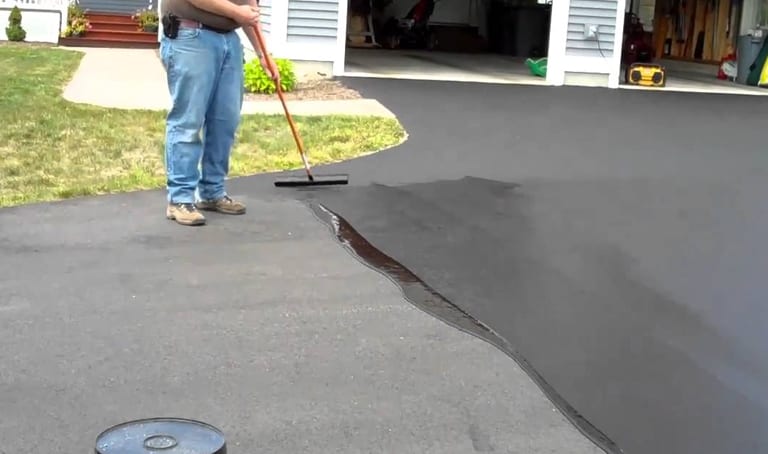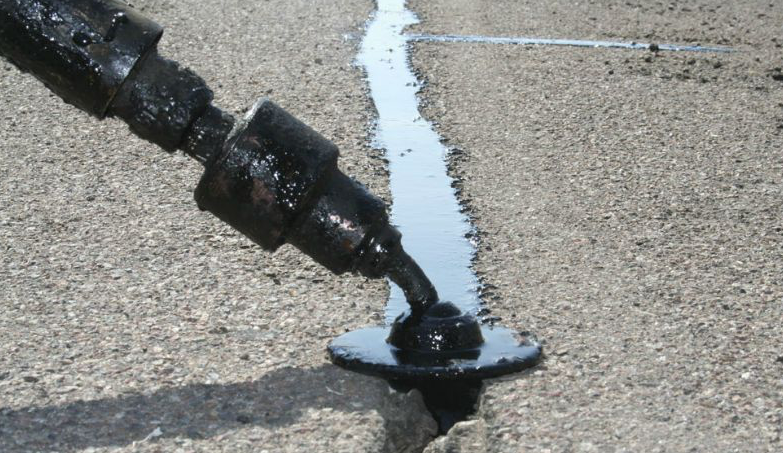Let loose the Possible: Regrading and Asphalt Sealing for Commercial Areas
Warm Mix Asphalt: A Lasting Solution for Pavement
Hot Mix Asphalt (HMA) has actually arised as a leading lasting selection for pavement remedies, offering a myriad of ingenious technologies and environmental benefits. Its capacity to minimize and recycle products energy usage offers a compelling case for its adoption in roadway construction tasks. The lasting efficiency and toughness of HMA make it a favored choice for facilities development. As the need for eco-friendly building and construction practices expands, checking out the subtleties of HMA's sustainability can offer useful understandings into the future of pavement remedies.
Environmental Advantages of Hot Mix Asphalt

Additionally, Warm Mix Asphalt helps to alleviate urban warm island effects. Its dark shade takes in sunshine, decreasing the quantity of heat mirrored back into the environment contrasted to lighter-colored pavements. This can reduce ambient temperature levels in urban areas, decreasing the need for cooling and eventually lowering energy intake.
Additionally, Hot Mix Asphalt contributes to enhanced stormwater monitoring. Its permeable nature allows water to reenergize and penetrate the pavement groundwater products, decreasing runoff and the risk of flooding. These environmental benefits make Hot Mix Asphalt a sustainable option for paving freeways and roadways.
Power Performance in HMA Production
Is power effectiveness a critical element in the production of Warm Mix Asphalt (HMA)? Energy plays a considerable role in the manufacturing of HMA, impacting both cost and ecological sustainability. One vital element of power performance in HMA production is the use of warm mix asphalt (WMA) innovations.
Additionally, developments in plant modern technologies have actually resulted in even more energy-efficient HMA production processes. Modern plants are made with functions like recycled asphalt pavement (RAP) handling abilities, effective burner systems, and improved insulation, all adding to energy savings. By optimizing energy usage in HMA manufacturing, the industry can minimize its carbon footprint while preserving premium pavement products. Energy performance is, for that reason, an important consideration in ensuring the sustainability of Hot Mix Asphalt manufacturing.
Recyclability of Hot Mix Asphalt
The recyclability of Warm Mix Asphalt (HMA) is a critical facet of its sustainability and lasting environmental effect. HMA is just one of the most recycled materials in the USA, with over 100 million lots of reclaimed asphalt pavement (RAP) being reused every useful link year in brand-new pavement building and construction. Recycling HMA provides a number of ecological advantages, such as decreasing the demand for virgin products, lowering energy consumption during production, and lowering the quantity of waste sent out to land fills.
The process of recycling HMA involves milling the existing pavement, crushing it into smaller pieces, and mixing it with new aggregate and asphalt binder to produce a recycled mix. This recycled mix can often carry out in addition to or perhaps much better than standard HMA, while requiring fewer resources and creating reduced greenhouse gas emissions. By incorporating RAP into brand-new pavement tasks, roadway firms can preserve natural deposits, lower prices, and decrease the ecological impact of road building and construction and maintenance tasks. Overall, the recyclability of HMA plays a significant role in advertising sustainable practices within the pavement industry.

Long-Term Performance of HMA
Asphalt sidewalks show sturdiness and strength over an extensive duration, mirroring the lasting efficiency of Hot Mix Asphalt (HMA) The longevity of HMA can be credited to its capability to stand up to hefty web traffic tons, extreme climate problems, and the results of aging. Researches have actually revealed that well-designed and appropriately created HMA sidewalks can last for 20 years or even more with regular upkeep. The trick to making the most of the long-term performance of HMA hinges on utilizing high-quality products, adhering to ideal methods in building and construction, and carrying out effective upkeep methods. Appropriate drainage, routine assessments, and prompt repair work are vital for preserving the structural honesty of HMA pavements in time. Additionally, advancements in HMA modern technology, such as making use of polymer-modified binders and warm mix asphalt, have further enhanced the toughness and durability of HMA pavements. By focusing on quality construction and upkeep techniques, HMA continues to show itself as a economical and sustainable remedy for resilient pavement framework.

HMA: Durability and Sustainability
Demonstrating anchor both durability and sustainability, Warm Mix Asphalt (HMA) has come to be a foundation in the construction of lasting sidewalk facilities - hot mix asphalt. HMA's longevity comes from its ability to stand up to hefty lots, extreme weather problems, and high traffic quantities, making Website it a reputable option for streets, freeways, and flight terminal paths. The composition of HMA, which generally consists of aggregates, binder, and filler, plays an essential duty in enhancing its durability and resistance to tear and wear
Moreover, HMA's sustainability depends on its recyclability and energy-efficient production process. The capacity to reuse recovered asphalt sidewalk (RAP) in new HMA combinations lowers the demand for virgin materials and lessens the ecological impact of sidewalk building and maintenance. In addition, the power efficiency of creating HMA exists in its lower mixing temperatures contrasted to various other sidewalk products, resulting in minimized power intake and greenhouse gas emissions.
Conclusion
In verdict, hot mix asphalt (HMA) provides a sustainable service for sidewalk with its eco pleasant attributes. HMA's recyclability, energy efficiency in manufacturing, and long-lasting toughness make it a green option for road construction.
HMA is one of the most recycled products in the United States, with over 100 million heaps of recovered asphalt sidewalk (RAP) being recycled annually in brand-new pavement construction.The procedure of recycling HMA entails milling the existing sidewalk, crushing it into smaller sized pieces, and blending it with new aggregate and asphalt binder to produce a recycled mix.Asphalt pavements show toughness and durability over an extended period, mirroring the long-lasting efficiency of Hot Mix Asphalt (HMA) In addition, improvements in HMA technology, such as the usage of polymer-modified binders and warm mix asphalt, have actually further improved the resilience and long life of HMA pavements. The capability to recycle recovered asphalt sidewalk (RAP) in new HMA mixes reduces the demand for virgin products and minimizes the ecological influence of pavement building and construction and maintenance.